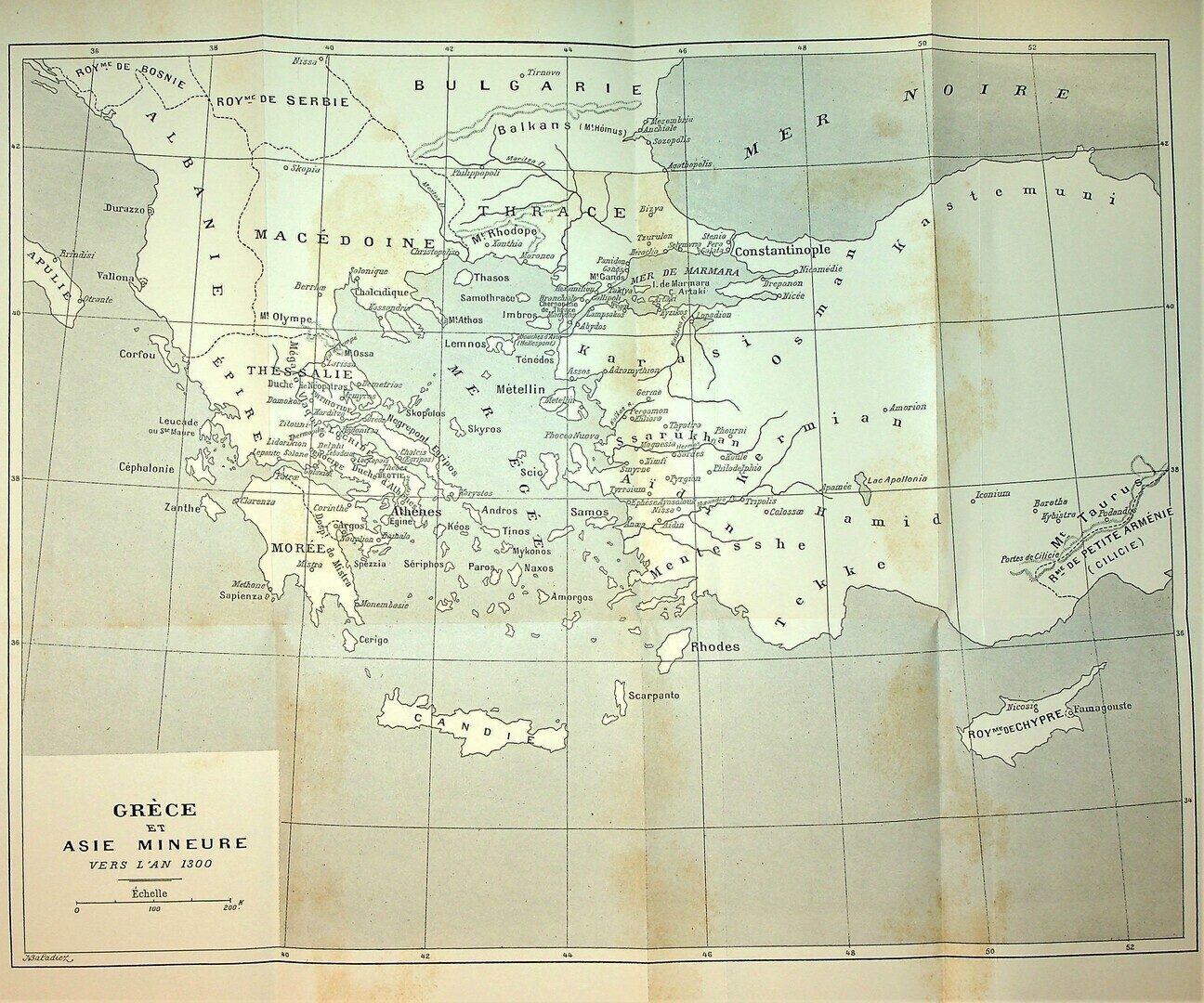Expedition des Almugavares: ou Routiers Catalans en Orient de L’An 1302 a L’An 1311.
Schlumberger, Gustave.
Synopsis
Léon Gustave Schlumberger (17 October 1844 – 9 May 1929) was a French historian and numismatist who specialised in the era of the crusades and the Byzantine Empire.
The Almogavares (from the Arab word Al-Mugawer), the name of a class of Spanish soldiers, well known during the Christian reconquest of Spain, and much employed as mercenaries in Italy and the Levant, during the 13th and 14th centuries. The Almogavares came originally from the Pyrenees, and were in later times recruited mainly in Navarre, Aragon and Catalonia. They were frontiersmen and foot-soldiers, they served the king, the nobles or the church for pay, and were professional soldiers.
In 1302, the Peace of Caltabellotta ended the war in southern Italy. 4,000 Almogavars, under the leadership of Roger de Flor (“Roger Blum”, a former Knight Templar), formed the Catalan Company in the service of the Emperor of the East, Andronicus II Palaeologus. This company was organized to fight against the Turks, defending the Byzantine Empire. Both kings of Aragon and Sicily agreed with this strategy as a viable alternative to having the Almogavar army standing unemployed in their realms.
The Almogavar campaign in Asia Minor took place in 1303 and 1304, and began with a series of great military victories, reaching the Cilician Gates and cornered Turks to the interior Anatolia. When the Almogavars insisted in receiving the agreed payment, the Byzantine Emperor refused. In 1305, Roger de Flor and his lieutenants were assassinated by orders of the Emperor while meeting to discuss terms on their compensation. This assassination may have been instigated by Genoese merchants, who were conspiring to keep their own position of influence and power.
This betrayal resulted in the surviving Almogavars, who resisted for two years a siege in Gallipolli and concentrated on the region of Thrace, leading off the Catalan Revenge, a war of extermination and systematic looting against the civilian population of the Byzantine Empire between 1305 and 1307 in revenge and retaliation for the murder of Roger de Flor and the attempted annihilation of the Company while it was stationed at Gallipoli.
In 1310 they marched against the duke of Athens, of the French house of Brienne. Walter of Brienne was defeated and massacred by them with all his knights at the battle of Cephissus, or The famous Battle of Lake Copais, in March 1311. The foundation of the Aragonese duchy of Athens was the culmination of the achievements of the Almogavares.








